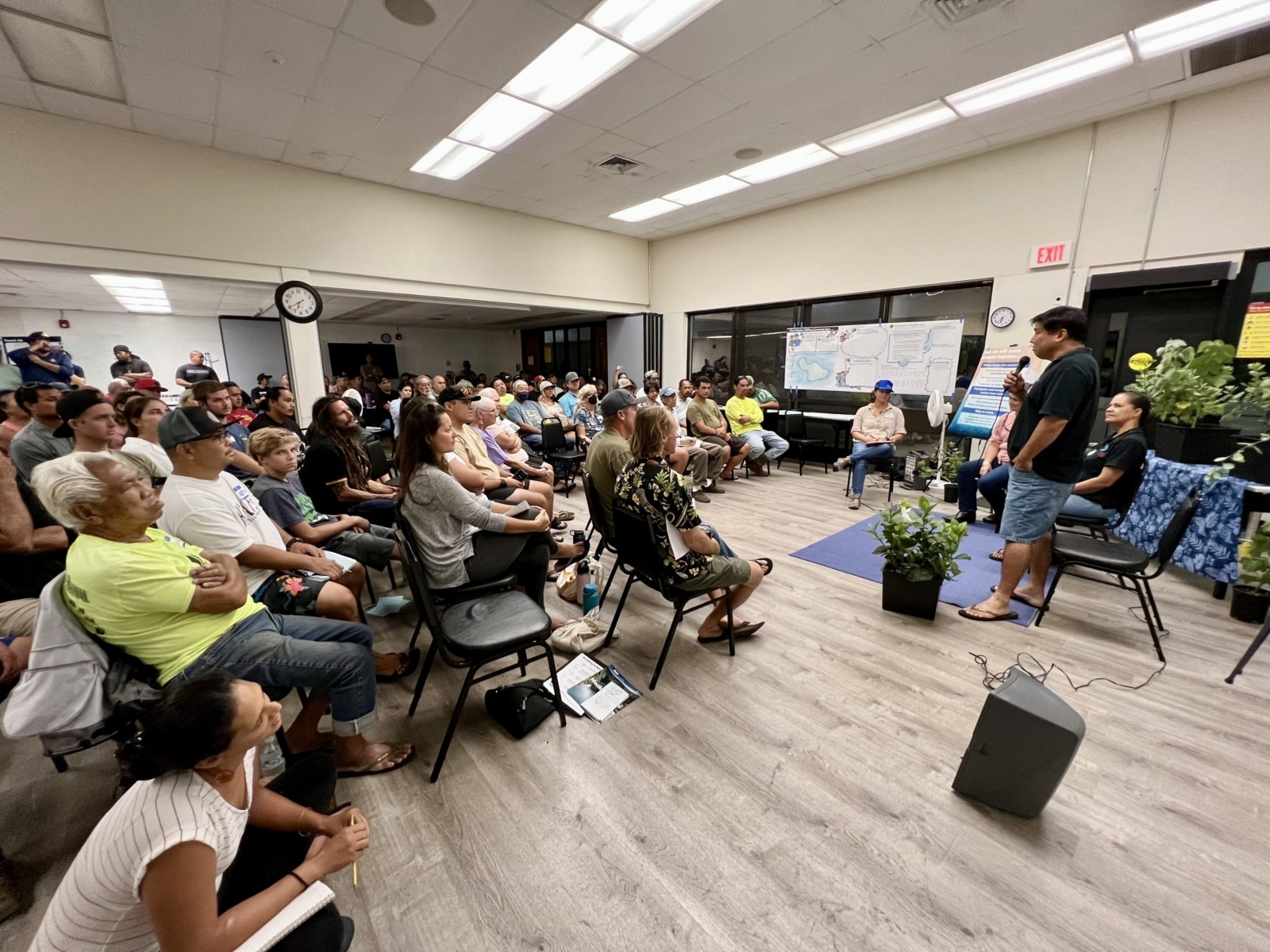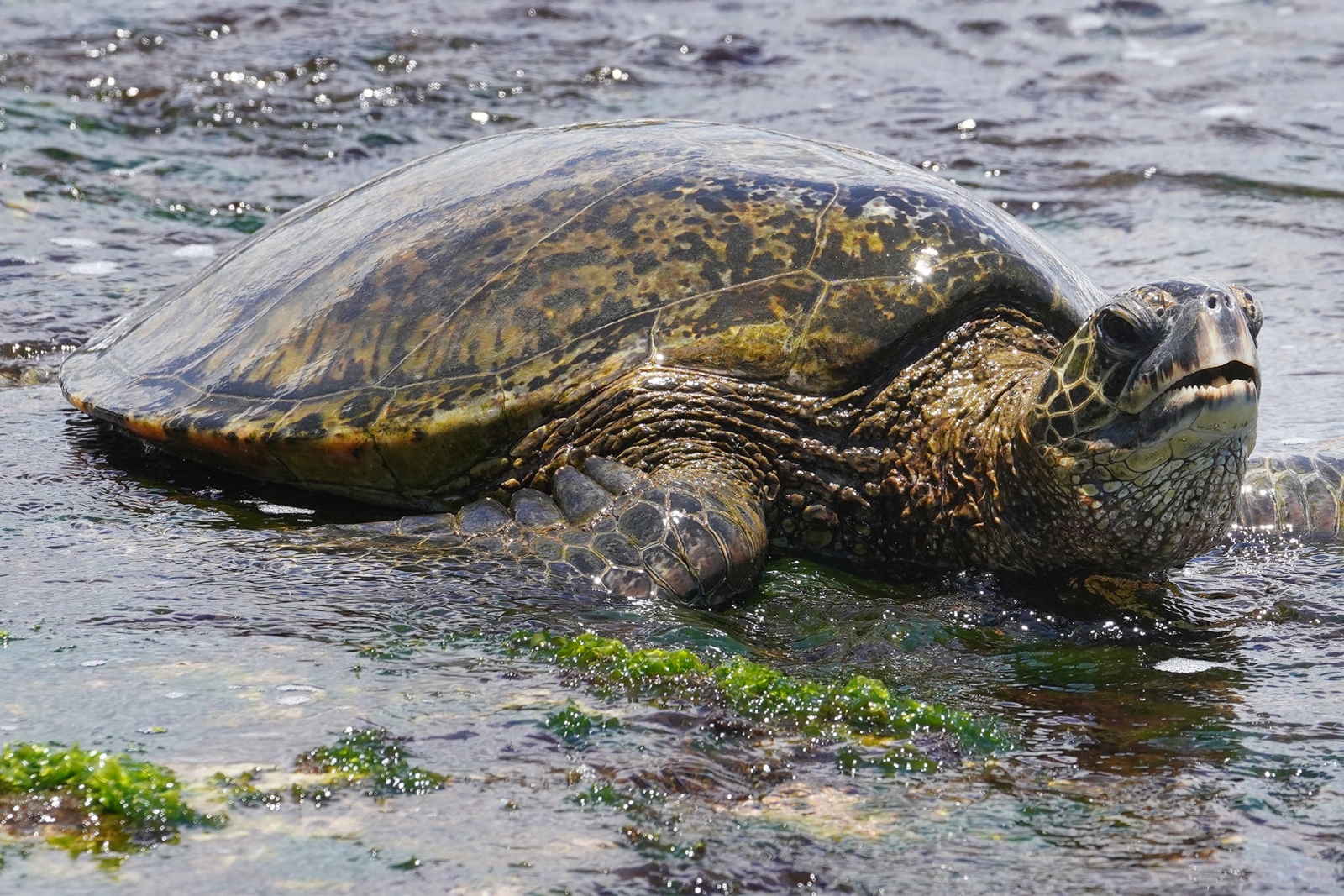This story was originally published by Honolulu Civil Beat.
Top ocean resource officials under Hawaii Governor Josh Green have quietly scrapped the state’s ambitious yet vaguely defined “30×30” marine conservation goal.
Hawaii became a national leader in 2016 when then Governor David Ige announced the state’s commitment to effectively manage at least 30 percent of the islands’ nearshore waters by 2030, coinciding with the international target of protecting 30 percent of the planet in the same time frame.
But Dawn Chang, Green’s controversial pick to lead the Department of Land and Natural Resources, or DLNR, said in a Jan. 30 letter that the Division of Aquatic Resources has listened to the community and is “adjusting accordingly” by ditching the “30×30” slogan as the stated target.
“We have heard from numerous fishers and experienced first-hand that the ’30×30′ language adds a lot of confusion about the initiative and is counterproductive in terms of having open dialogue about issues and solutions for reaching our desired goals for nearshore waters,” she said.
The change aims to make the new safeguards being developed for Hawaii’s imperiled marine life more community-driven, Chang said.
But it remains to be seen what measurable goals would replace 30×30 in the state’s Holomua Marine Initiative now that it’s been removed. It also remains unclear whether the change, which was not widely publicized by DLNR, reflects broader public sentiment across Hawaii beyond the state’s vocal fishing community, which pressed in recent months for the removal.
Fishers showed up en masse late last year at a trio of lively, DLNR-organized public meetings on Maui, the pilot island for Holomua. Many feared that the initiative would entirely ban fishing across 30 percent of the state’s waters. In reality, it would have kept those waters open to fishing but with new regulations such as gear and bag limits, according to top DAR officials.
“I don’t think we’re just responding to the loud voices,” Chang said last week. “We’re not abandoning any of the work that has been done to date. All of that scientific information, all of the Indigenous knowledge we’ve collected … those are all part of the toolbox. We’re just using a different approach.”

The 30×30 conservation concept has been embraced in recent years by scientists, the United Nations and President Joe Biden’s administration as an effective means to help combat climate change, as well as a catchy slogan that the public could rally behind.
In Hawaii, its removal was largely due to a mix of legitimate concerns and rampant misinformation spreading online among local fishers, according to Chang and her deputies overseeing Holomua. They deemed the concept too divisive, so she announced the state’s departure from 30×30 in a letter last month she said went out to various parties interested in Holomua.
A local fishing advocacy group called the Hawaii Fishermen’s Alliance for Conservation and Tradition, or HFACT, held its own, separate meetings on Kauai, Oahu, and Maui to brief fishers on 30×30 and to encourage them to attend the DLNR’s Maui meetings.
More than 700 fishers attended those HFACT “pre-meetings,” according to association president Phil Fernandez. The large turnout was one “silver lining” to all the misinformation and fear swirling about, but once HFACT had fishers in the room it tried to set the record straight, he added.
Many fishers at those meetings said the 30 percent target didn’t make sense to them, Fernandez said. “They want 100 percent to be effectively managed. Why ignore the other 70?”
They also wanted to see a more “holistic” conservation approach that addresses land-based pollution sources, adds artificial reefs in some spots to help generate more fish, and places less of an emphasis on fishing restrictions, he said.
DAR Administrator Brian Neilson said the HFACT meetings caught his staff off-guard.
“We had only planned for these talk-story sessions in Maui,” Neilson said last week. “But when HFACT held these other meetings … and got everyone riled up, we weren’t prepared for that.”
In December, HFACT Executive Director Edwin Watamura, acting on behalf of the group’s 3,000 or so participants, urged state senators during an informational briefing to scrap 30×30 altogether from the state’s plans. Watamura, a former member of the Western Pacific Regional Fishery Management Council, called the goals “arbitrary.”
Chang said DLNR’s decision to scrap 30×30 was made internally in January. They didn’t consult privately with any outside groups ahead of time on whether to do that, she said.
Her bid to get confirmed by the Senate sometime in the near future didn’t factor into the decision either, she added.
Both Neilson and Luna Kekoa, a DAR planner working on Holomua, said they supported Chang’s decision to remove 30×30. Kekoa said Holomua’s core pillar of “place-based planning” remains in effect and that could still mean 30×30 along some parts of Hawaii’s coastline.
“We just took it out of the name,” Kekoa said, so that some people don’t reflexively reject their efforts.
Critics worry the change could weaken the effort to ramp up protection of the islands’ marine life as more coral reefs and fish disappear.
“I think we need to leave it in there to make sure we are accountable,” said Ekolu Lindsey, a Lahaina resident involved in various conservation groups on Maui.

DLNR has struggled to explain to the community what the 30×30 management would entail, he said, which helped the misinformation to spread.
“We’re still struggling with what is ‘effectively managed,’” Lindsey said. “I think this process that they (DLNR) have is transparent, but the misinformation may kill it. A lot of the fishermen just don’t understand it, and they’re getting confused.”
Hawaii has seen a 60 percent loss of its coral across the islands in the past 40 years, and a 90 percent loss in the catch rates of some fish species, according to Ulalia Woodside, executive director for The Nature Conservancy in Hawaii.
“We know that climate change is accelerating that,” she said.
Ige first announced Hawaii’s commitment to “effectively manage” 30 percent of its watersheds and nearshore waters by 2030 at a major environmental conference in Honolulu in 2016.
“We are a microcosm of our planet earth,” Ige told several thousand attendees of the International Union for the Conservation of Nature’s World Conservation Congress gathered at the Blaisdell Center. ”We cannot afford to mess this up.”
Since then, the process has moved slowly. Nearly seven years after Ige’s declaration, the state considers 6 percent of its nearshore waters effectively managed, Kekoa said.
Neilson attributed much of that slow pace to budget cuts and the Covid-19 pandemic.
”It was kind of an unfunded mandate,” he said, noting that staff can only be redirected to do so much.
He said it was important to proceed carefully so as not to lose community trust.
Meanwhile, both the U.N. and the U.S. federal government are advancing their own versions of 30×30. The U.S. effort largely relies “marine protected areas” that already exist across the Pacific Ocean, such as the Papahanaumokuakea Marine National Monument, where virtually all fishing is prohibited.
Green said on the campaign trail in early November that as governor he “would continue to support the Holomua program, which seeks to effectively manage Hawaii’s nearshore waters by 2030 with significant input from interested community members.”
Chang, Neilson and Kekoa said the program is still working that way. Chang has stressed that her strengths lie in her ability to conduct a thorough and transparent public process including robust community engagement before making any difficult decisions.
Critics were concerned, however, that DLNR stripped 30×30 before it had even finished appointing a “Navigation Team” of key Maui community members to make policy recommendations on the island’s marine management plan.
Last week, DLNR staff was slated to present on the “Holomua 30×30 Initiative” during the Fifth International Marine Protected Areas Congress meeting in Vancouver. But pulling the 30×30 language was never mentioned, according to Lindsey, who attended the presentation.
Lindsey said he thinks DLNR is removing it “with the best of intention,” based on hearing that the community doesn’t like the 30 percent part. But he said the solution could have been to just define it better.
Woodside said that it makes sense for the state to step away from 30×30 to be “less fixated” on a particular number and to keep Hawaii’s local communities more open to the proposals under Holomua.
She added, however, that doing so still requires meaningful goals to reach biological, social and cultural targets.
The need to act urgently to address climate change in Hawaii while maintaining public trust is a challenge but it can be done, Woodside said.
“Many folks have said progress moves at the speed of trust,” she said. “We have examples where there hasn’t been that trust. And that means that good work – even if it was done quickly – wasn’t able to materialize or move across the finish line.”
Civil Beat’s coverage of climate change is supported by the Environmental Funders Group of the Hawaii Community Foundation, Marisla Fund of the Hawaii Community Foundation and the Frost Family Foundation.



